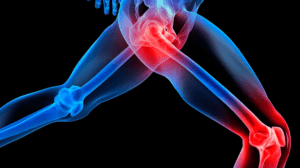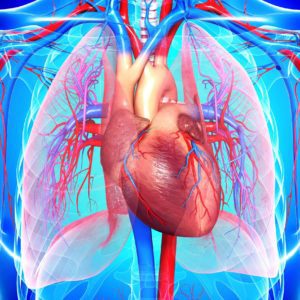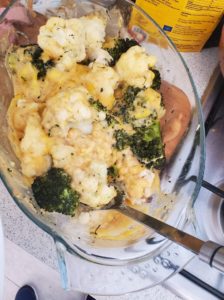
An Introduction:
This is a really fascinating study that has been taking place since 1884, when Lectins were first discovered in a blood group investigation. They are found in fruit, vegetables and grain that have created defenses against being eaten in order to survive. Therefore ‘some of the very fruit and vegetables that sustain us, simultaneously contain substances that can harm us’. This is because ‘[quite simply] plants don’t want to be eaten. Like any living thing, their instinct is to propagate the next generation of their species.’ Many years ago, humans designed effective means in order to deal with lectins so that they could escape the damage they cause. These days however, we tend instead to invent drugs and ways of masking the pain ‘so we can continue to eat a substance designed to destroy, cause pain in, or at least weaken us’.
Gluten is a classic example of a food group that can be particularly harmful to it’s consumer, however this is just one example of a type of lectin. Another is peanuts with only 44% of humans being born with the antibodies against them. This blog offers a more comprehensive look at how plants can sometimes hurt us and also reveals the link among lectins (and other defensive plant chemicals) in terms of weight gain and disease.
What are Lectins?
Lectins are, for the most part, ‘large proteins found in plants and animals, and they are the crucial weapon in the arsenal of stategies that plants use to defend themselves in their ongoing battle with animals. The exact science behind this is better explained by Steven Gundry in Plant Paradox:
“Lectins in the seeds, grains, skins, rinds and leaves of most plants bind to carbohydrates (sugars) and particularly to complex sugars called polysaccharides, in the predator’s body after it consumes the plant. Like smart bombs, lectins target and attach themselves to sugar molecules, primarily on the surface of the cells of other organisms. Because of this binding process, they can interrupt messaging between cells or otherwise cause toxic or inflammatory reactions…[they] also facilitate the attachment and binding of viruses and bacteria to their intended targets. Some people are therefore more subject to viruses and bacterial infections than others”.
-Steven Gundry, Plant Paradox.
Plant’s Self-Defense
As we mentioned before, a plant’s survival is dependent on it’s defenses against animals. ‘Instead of hard casing, some naked seeds contain chemicals. These chemicals (referred to as anti-nutrients) weaken predators, paralyse them or make them ill so they won’t make the mistake of eating the plant again.
How these anti-nutrients work:
- They prevent absorbtion of minerals in the diet
- They keep digestive enzymes from doing their job
- They disrupt cellular communication by causing gaps in the intestinal wall barrier (causing leaky gut)
Weight Gain
‘When lectins breach the intestine’s walls, your body goes on the defensive. In order to have sufficient calories to fuel the white blood cells (your immune army) fighting the war within your body, your muscle becomes insulin and leptin resistant. (often called metabolic syndrome) not because we’re fat; instead we are fat because we are saving calories for the war effort. This is why we have become fatter, sicker and less fit over the last half century.‘
Just to emphasize how damaging lectins can be to our system, here is an A-Z list put together by Dr Steven Gundry, of all the health problems we could improve if we cut down on lectins and adjusted the way we prepare our food:
- Aching joints
- Acid reflux/ heartburn
- Acne
- Age spots, skin tags
- Allergies
- Alopecia
- Anemia
- Arthritis
- Asthma
- Autoimmune Diseases (inc Autoimmune Thyroid Disease, Rheumatoid Arthritis, Type 1 Diabetes, Multiple Sclerosis, Crohn’s, Colitis, and Lupus)
- Bone Loss (inc Osteopenia and Osteoporosis)
- Brain fog
- Cancer
- Canker Sores
- Chronic Fatigue Syndrome
- Chronic Pain Syndrome
- Colon Polyps
- Cramps, tingling and numbness
- Decline in dental health
- Dementia
- Depression
- Diabetes, pre-diabetes, insulin resistance
- Exhaustion
- Fat in the stool (due to poor digestion)
- Fibromyalgia
- Gastroesophageal Reflux Disease (GERD), Barrett’s Esophagus
- Gastrointestinal problems (bloating, pain, gas, constipation, diarrhea)
- Headaches
- Heart Disease, conorary artery disease, vascular disease
- Hypertension
- Infertilty, irregular mentrual cycle, miscarriage
- Irritability and behavioral changes
- IBS
- Low counts of immunoglobulin G, immunoglobulin M, and immunoglobulin A
- Low Testosterone
- Low white blood cell count
- Lymphonas, Leukemias, Multiple Myeloma
- Male-pattern baldness
- Memory Loss
- Migraine Headaches
- Nutritional Difficiencies due to malabsorption- eg low iron levels
- Parkinson’s disease
- Peripheral Neuropathy
- Polycystic Ovary Syndrome (PCOS)
- Skin Rashes (inc Dermatitis herpetiformis, eczema, and psoriasis)
- Slow infant and child growth
- Unexplained bouts of dizziness or ear ringing
- Vitiligo
- Weight loss / Weight gain.
FOR MORE INFORMATION ON THE BEST WAYS TO PREPARE FOOD AND WHAT TO AVOID, CONTACT US AT niall@niallfitness.co.uk






